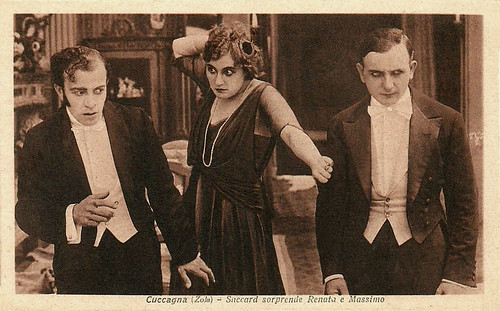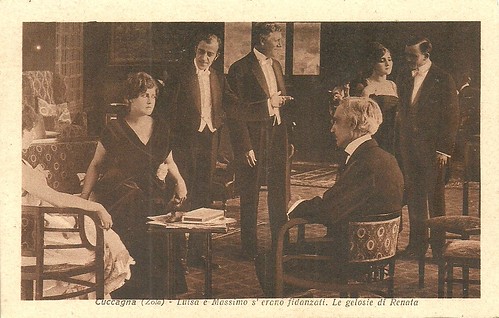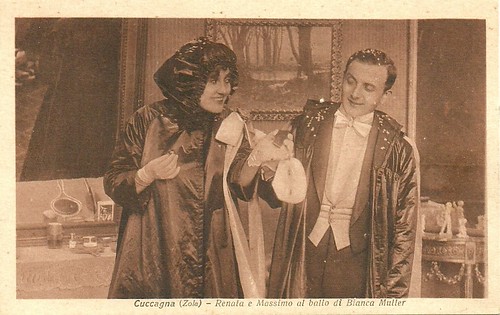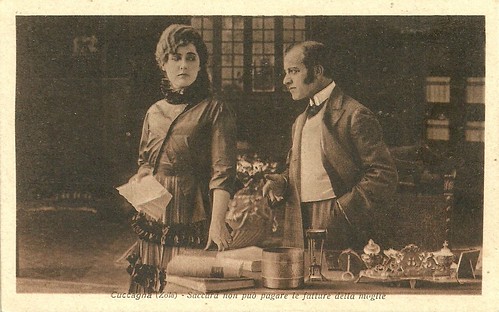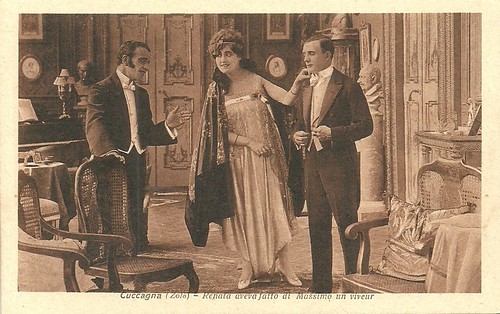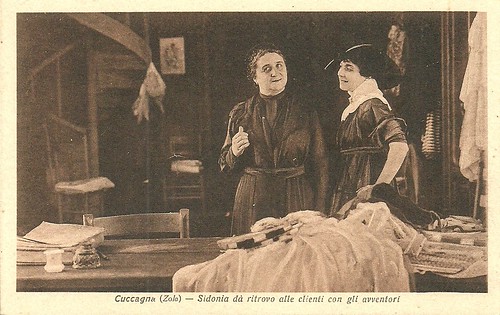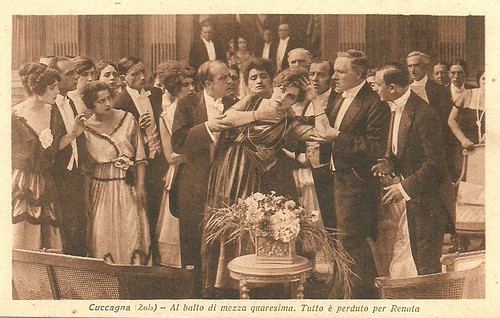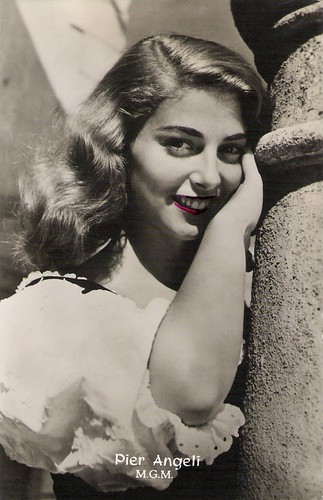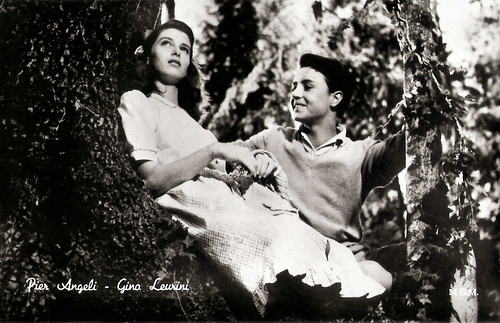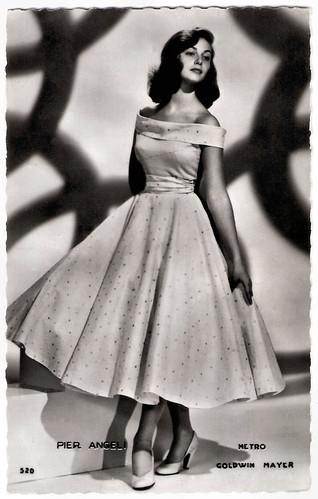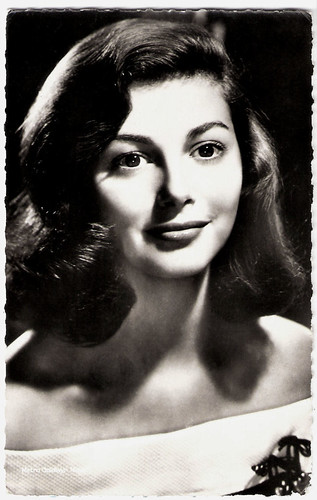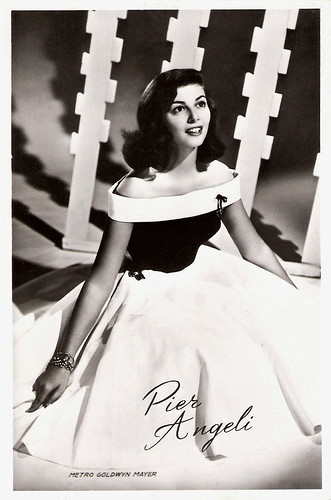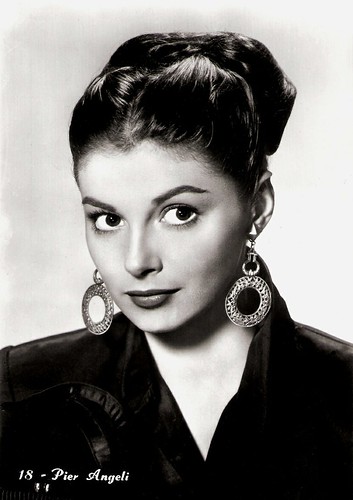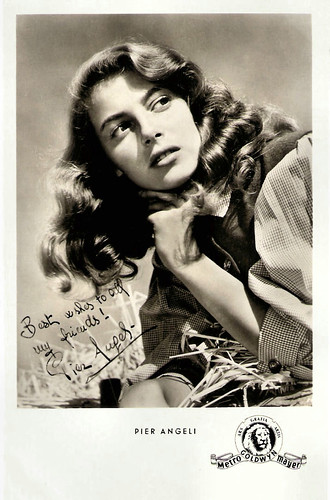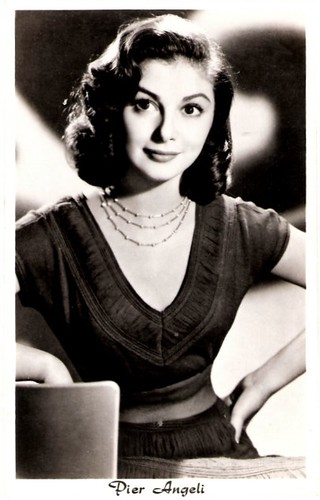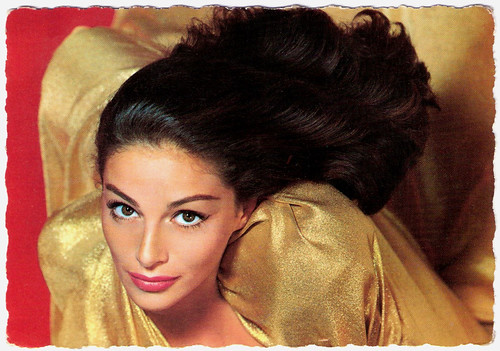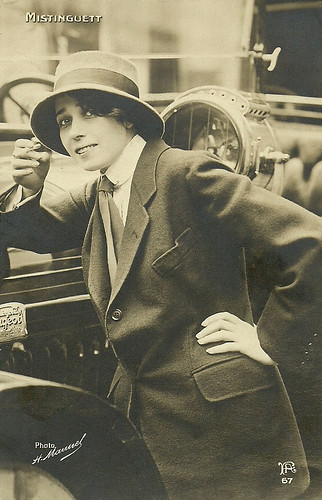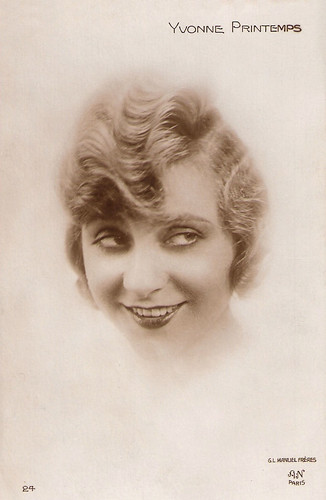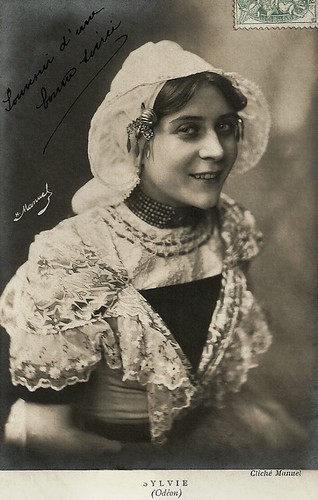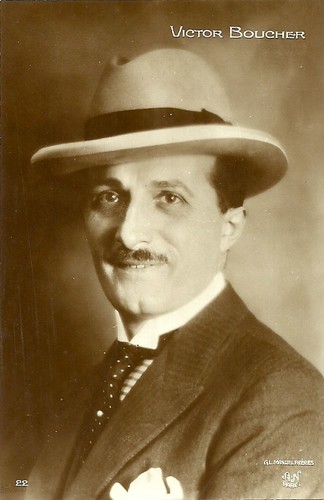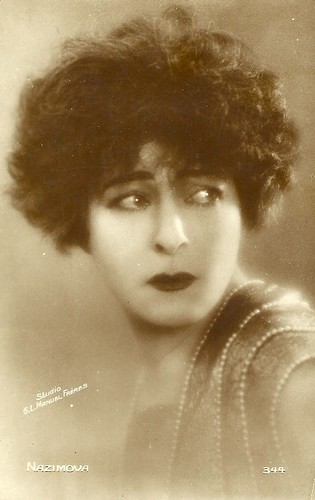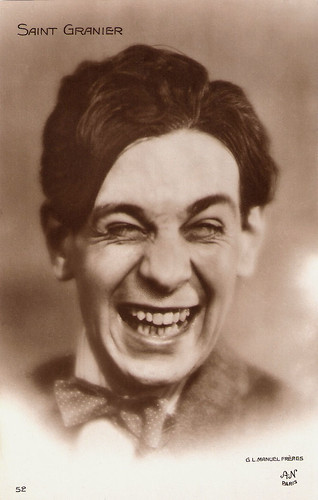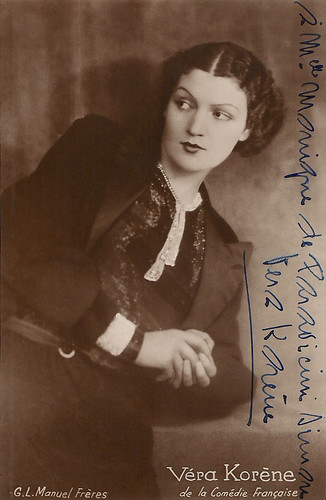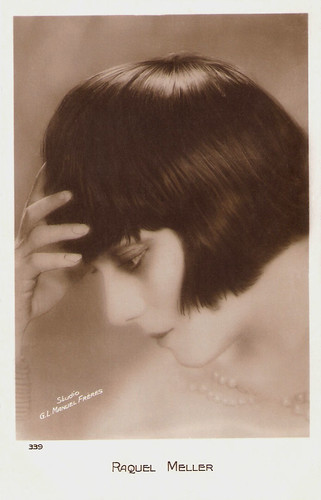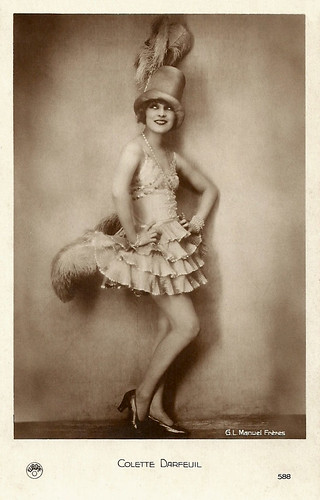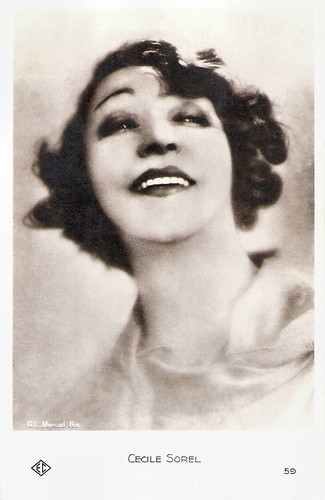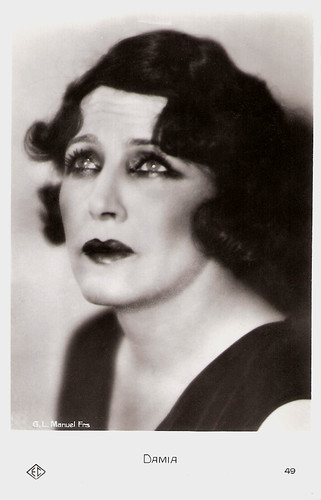Vivacious Kate Winslet (1975) is often seen as the best English-speaking film actress of her generation. The English actress and singer was the youngest person to acquire six Academy Award nominations, and won the Oscar for The Reader (2008).
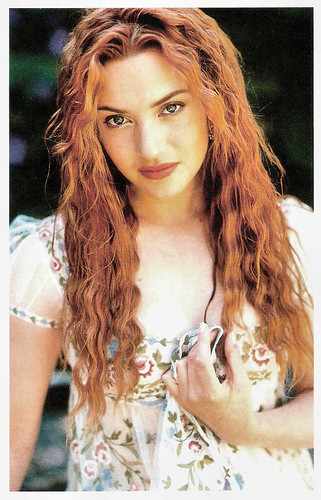
Belgian postcard by P Magazine, no. 37 in the series 'De mooiste vrouwen van de eeuw' (the 100 most beautiful women of the century). Photo: Sante D'Orazio / Outline.
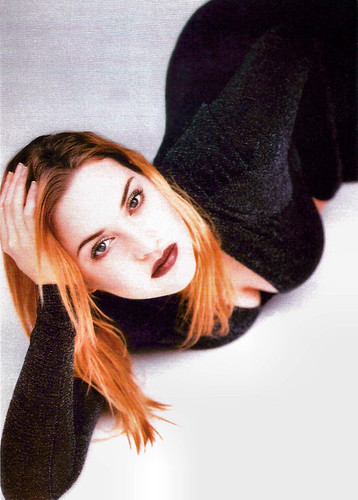
British postcard.
Heavenly Creatures
Kate Elizabeth Winslet was born Reading, England, in 1975. She is the second of four children of stage actors
Sally Anne (née Bridges) and
Roger John Winslet. Winslet began studying drama at the age of 11. The following year, she appeared in a television commercial for Sugar Puffs cereal, in which she danced opposite the Honey Monster.
Winslet's acting career began on television, with a co-starring role in the BBC children's science fiction serial
Dark Season (Colin Cant, 1991). On the set, Winslet met
Stephen Tredre, who was working as an assistant director. They would have a four-and-a-half-year relationship, and remained close after their separation in 1995. He died of bone cancer during the opening week of
Titanic, causing her to miss the film's Los Angeles premiere to attend his funeral in London.
Her role in
Dark Season was followed by appearances in the made-for-TV film
Anglo-Saxon Attitudes (Diarmuid Lawrence, 1992), the sitcom
Get Back (Graeme Harper, 1992), and an episode of the medical drama
Casualty (Tom Cotter, 1993).
She made her film debut in the New Zealand drama film Heavenly Creatures (Peter Jackson, 1994). Winslet auditioned for the part of Juliet Hulme, an obsessive teenager in 1950s New Zealand who assists in the murder of the mother of her best friend, Pauline Parker (played by
Melanie Lynskey). Winslet won the role over 175 other girls. The film included Winslet's singing debut, and her a cappella version of
Sono Andati, an aria from
La Bohème, was featured on the film's soundtrack.
The film opened to strong critical acclaim at the 51st Venice International Film Festival in 1994 and became one of the best-received films of the year. Winslet was awarded an Empire Award and a London Film Critics' Circle Award for British Actress of the Year.
Subsequently she played the second leading role of Marianne Dashwood in the
Jane Austen adaptation
Sense and Sensibility (Ang Lee, 1995) featuring
Emma Thompson,
Hugh Grant and
Alan Rickman. The film became a financial and critical success, resulting in a worldwide box office total of $135 million and various awards for Winslet. She won both a BAFTA and a Screen Actors' Guild Award, and was nominated for both an Academy Award and a Golden Globe.
In 1996, Winslet starred in
Michael Winterbottom's
Jude, based on the Victorian novel
Jude the Obscure by
Thomas Hardy. She played Sue Bridehead, a young woman with suffragette leanings who falls in love with her cousin (
Christopher Eccleston).
She then played Ophelia, Hamlet's drowned lover, in
Kenneth Branagh's all star-cast film version of
William Shakespeare's
Hamlet (1996).
In mid-1996, Winslet began filming
James Cameron's
Titanic (1997), alongside
Leonardo DiCaprio. She was cast as the passionate, rosy-cheeked aristocrat Rose DeWitt Bukater, who survives the 1912 sinking of the RMS Titanic. Against expectations,
Titanic (1997) became the highest-grossing film in the world at the time and transformed Winslet into a commercial movie star.
Young girls the world over both idolized and identified with Winslet. Despite the enormous success of
Titanic, Winslet next starred in two low-budget art-house films,
Hideous Kinky (Gillies MacKinnon, 1998), and
Holy Smoke! (Jane Campion, 1999).
In 1997, on the set of
Hideous Kinky, Winslet met film director
Jim Threapleton, whom she married in 1998. They have a daughter,
Mia Honey Threapleton (2000). Winslet and Threapleton divorced in 2001.
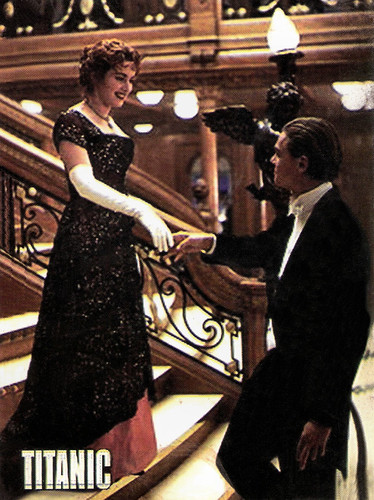
Vintage postcard. Photo: publicity still for
Titanic (James Cameron, 1997) with
Leonardo DiCaprio.
Eternal Sunshine of the Spotless Mind
Since 2000, Kate Winslet's performances have continued to draw positive comments from film critics. She appeared in the period piece
Quills (Philip Kaufman, 2000) with
Geoffrey Rush and
Joaquin Phoenix, inspired by the life and work of the
Marquis de Sade. The actress was the first big name to back the film project, accepting the role of a chambermaid in the asylum and the courier of the Marquis' manuscripts to the underground publishers. Well received by critics, the film garnered numerous accolades for Winslet.
In
Enigma (Michael Apted, 2001), she played a young woman who finds herself falling for a brilliant young World War II code breaker (
Dougray Scott). She was five months pregnant at the time of the shoot, forcing some tricky camera work.
In the same year she appeared in
Iris (Richard Eyre, 2001), portraying novelist
Iris Murdoch. Winslet shared her role with
Judi Dench, with both actresses portraying Murdoch at different phases of her life. Subsequently, each of them was nominated for an Academy Award the following year, earning Winslet her third nomination.
Also in 2001, she voiced the character Belle in the animation film
Christmas Carol: The Movie, based on the
Charles Dickens classic novel. For the film, Winslet recorded the song
What If, which was a Europe-wide top ten hit.
Winslet began a relationship with director
Sam Mendes in 2001, and she married him in 2003 on the island of Anguilla. Their son,
Joe Alfie Winslet Mendes, was born in 2003 in New York City. In 2010, Winslet and Mendes announced their separation and divorced in 2011.
In the drama
The Life of David Gale (Alan Parker, 2003), she played an ambitious journalist who interviews a death-sentenced professor (
Kevin Spacey) in his final weeks before execution.
Next, Winslet appeared with
Jim Carrey in
Eternal Sunshine of the Spotless Mind (Michel Gondry, 2004). In this neo-surrealistic indie-drama, she played Clementine Kruczynski, a chatty, spontaneous and somewhat neurotic woman, who decides to have all memories of her ex-boyfriend erased from her mind. The film was a critical and financial success and Winslet received rave reviews and her fourth Academy Award-nomination.
Finding Neverland (Marc Forster, 2004), is the story of Scottish writer
J.M. Barrie (
Johnny Depp) and his platonic relationship with Sylvia Llewelyn Davies (Winslet), whose sons inspired him to pen the classic play
Peter Pan, or The Boy Who Wouldn't Grow Up. The film received favourable reviews and became Winslet's highest-grossing film since
Titanic.
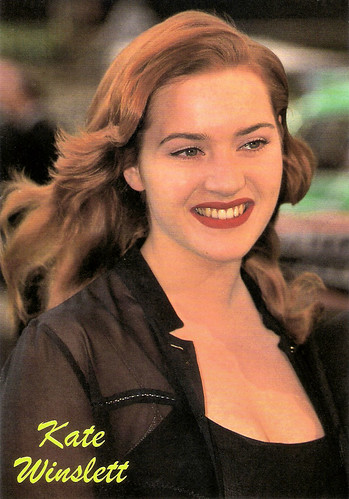
British postcard by Heroes Publishing Ltd, London, no. SFC 3312.
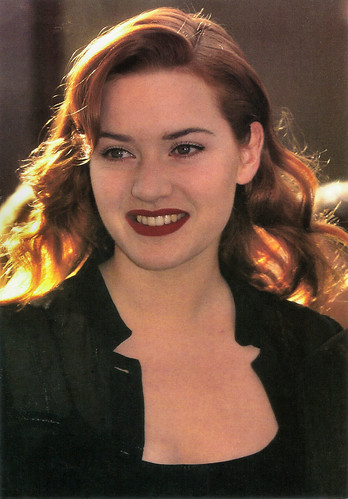
British postcard by Anabas, Essex, no. AP647, 1998.
The Reader
In 2005, Kate Winslet played a satirical version of herself in an episode of the comedy series
Extras by
Ricky Gervais and
Stephen Merchant. While dressed as a nun, she was portrayed giving phone sex tips to the romantically challenged character of Maggie. Her performance in the episode led to her first nomination for an Emmy Award.
In the musical romantic comedy
Romance & Cigarettes (John Turturro, 2005), she played the slut Tula, and again Winslet was praised for her performance. In
Todd Field's
Little Children (2006), she played a bored housewife who has a torrid affair with a married neighbour (
Patrick Wilson). Both her performance and the film received rave reviews. Again she was nominated for an Academy Award for Best Actress, and at 31, became the youngest actress to ever garner five Oscar nominations.
Commercial successes were
Nancy Meyers' romantic comedy
The Holiday (2006), also starring
Cameron Diaz, and the CG-animated
Flushed Away (2006), in which she voiced Rita, a scavenging sewer rat who helps Roddy (
Hugh Jackman) escape from the city of Ratropolis and return to his luxurious Kensington origins.
In 2007, Winslet reunited with
Leonardo DiCaprio to film
Revolutionary Road (2008), directed by her husband at the time,
Sam Mendes. Portraying a couple in a failing marriage in the 1950s, DiCaprio and Winslet watched period videos promoting life in the suburbs to prepare themselves for the film. Winslet was awarded a Golden Globe Award for Best Actress for her performance, her seventh nomination from the Golden Globes.
Then she starred in the film adaptation of
Bernhard Schlink's 1995 novel
The Reader (Stephen Daldry, 2008) featuring
Ralph Fiennes and
David Kross in supporting roles. Employing a German accent, Winslet portrayed a former Nazi concentration camp guard who has an affair with a teenager (Kross) who, as an adult, witnesses her war crimes trial. While the film garnered mixed reviews in general. The following year, she earned her sixth Academy Award nomination and went on to win the Best Actress award, the BAFTA Award for Best Actress, a Screen Actors' Guild Award for Outstanding Supporting Actress, and a Golden Globe for Best Supporting Actress.
In 2011, Kate Winslet headlined in the HBO miniseries
Mildred Pierce, based on
James M. Cain's 1941 novel and directed by
Todd Haynes. She portrayed a self-sacrificing mother during the Great Depression who finds herself separated from her husband and falling in love with a new man (
Guy Pearce), all the while trying to earn her narcissistic daughter's (
Evan Rachel Wood) love and respect. This time, Winslet won an Emmy Award, a Golden Globe Award and a Screen Actors Guild Award.
Roman Polanski's
Carnage (2011) premiered at the 68th Venice Film Festival. The black comedy follows two sets of parents who meet up to talk after their children have been in a fight that day at school.
Jodie Foster,
John C. Reilly and
Christoph Waltz co-starred in the film.
In 2012, she was appointed a Commander of the Order of the British Empire (CBE). In
Jason Reitman's big screen adaptation of
Joyce Maynard's novel
Labor Day (2013), she starred with
Josh Brolin and
Tobey Maguire. Winslet received favourable reviews for her portrayal of Adele, a mentally fragile, repressed single mom of a 13-year-old son who gives shelter to an escaped prisoner during a long summer week-end. For her performance, Winslet earned her tenth Golden Globe nomination.
Next she appeared in the science fiction film
Divergent (Neil Burger, 2014), as the bad antagonist Jeanine Matthews. It became one of the biggest commercial successes of her career. This year, Winslet also appeared alongside
Matthias Schoenaerts in
Alan Rickman's period drama
A Little Chaos (2014) about rival landscape gardeners commissioned by Louis XIV to create a fountain at Versailles.
Next she can be seen in the crime-thriller
Triple Nine (John Hillcoat, 2015), the sequel in the Divergent series:
Insurgent (Robert Schwentke, 2015) and in
The Dressmaker (Jocelyn Moorhouse, 2015).
Since 2012, Kate Winslet is married to
Ned Rocknroll, a nephew of
Richard Branson. The couple has a son, Bear Blaze Winslet. They live in West Sussex.
Kate Winslet sings
What If. Official Music Video. Source: Chris Horton Productions (YouTube).
Trailer for
The Reader (Stephen Daldry, 2008). Source: Associated Press (YouTube).
Sources:
Tom Ryan (Encyclopedia of British Film),
Sandra Brennan (AllMovie),
Wikipedia, and
IMDb.

